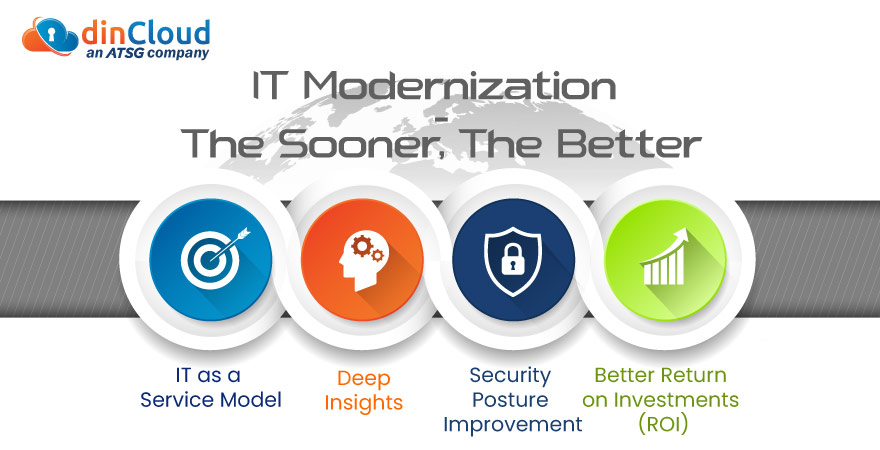Onset of the pandemic brought a lot of economic insecurities and uncertainties among businesses. Everything, from consumer behavior to supply chain disruptions, is evolving at a rapid pace. The switch to Remote-based Work became a necessity for businesses’ survival.
Businesses leveraged flexible technologies, like Cloud Computing, to adapt to this digital transformation. They were unsure about how the traditional infrastructure and processes would be molded to the changing environments. Traditionally, advanced technologies and innovations used to be layered on top of the core systems, as small incremental changes.

Unfortunately, that was a short-term solution, because in the long term, it caused architectural complexities and technical issues to un-manageable extents. It took months and years for legacy infrastructure capacity to be added. Pandemic pushed enterprises towards the modernization of IT, as a prerequisite, before a full-blown digital transformation.
IT Modernization enables businesses to lay a solid foundation on which they can access new markets and create efficient infrastructural models. Modernization brings in a whole lot of advantages like agility, decreased complexities, automation and integration. Modernization has a lot of other benefits as well, some of them are listed below.
1. IT as a Service Model
When organizations modernize their core systems with the help of Cloud (hybrid cloud and multi-cloud), they get on-demand unlimited data storage capacity and provisioning flexibility. At this stage, organizations can pick and choose which services they want to access and pay for, as per their demand, and which services they do not wish to use. This way, they can reduce organizational cost as well.
2. Deep Insights
Analytics, advanced AI solutions and unlimited data, offered by Cloud Service Providers, like dinCloud, can be leveraged by organizations to get deep insights about the market. Based on this data, they can make predictions regarding expansion of market, possible improvements and consumer’s buying behavior. The “fail fast, learn faster” methods can easily be incorporated by enterprises, owing to the Cloud’s built-in flexibility.
3. Security Posture Improvement
Risks related to technology can be reduced by enterprises, if they adopt IT modernization. Businesses can improve their IT experience when then inculcate modernization in their networks, providing security embedded network designs.
Modernization has some really beneficial by-products, which force organizations to implement it, at a rapid pace. Process up-gradations and keeping up with dynamic security regulations are some of these advantageous by-products.
4. Better Return on Investments (ROI)
IT Modernization of organizations will be able to generate exceptional value against the amount of investment that is injected for its application. For instance, great value can be derived from the modernization of applications, especially when done at the right time. Enterprises will not have the need to re-write or re-factor applications every now and then, thus reducing their overall costs.
Conclusion
Poly-cloud models enable enterprise to work without restrictions. For example, a core banking system over the Cloud can be upgraded really quickly, as compared to on-premise, legacy systems. Today, all modernized core banking is Cloud-based, easily allowing their compostable architecture to adapt to any new innovation in products and services. At the end, it all boils downs to organizations’ individual choices, whether they want to make modernization processes gradual, or all at once.
Today, IT modernization is much more feasible and easier to achieve than it was a few years ago. The process of IT infrastructure hosting can be outsourced to specialized third party Cloud Service Providers, like dinCloud. An ATSG company, dinCloud, provides modernization solutions for agility and flexibility of the enterprise.


